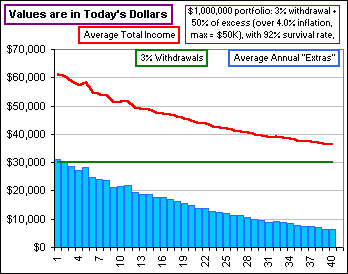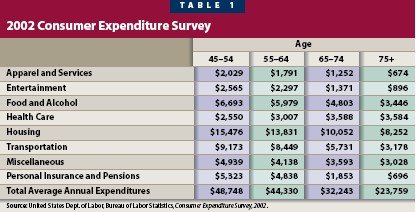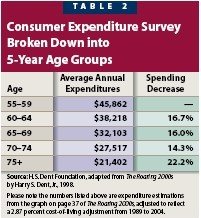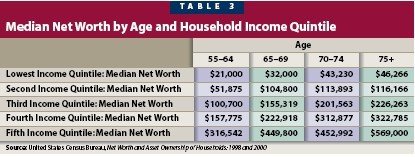I would like to suggest that Gummy's withdraw system be reconsidered by all of you nay sayers. To make my point I first quote from his website a portion of his dialog:
"I'd like to consider a different scenario where we decide upon some Minimum annual withdrawal rate ... just enough to pay the bills (and live on bread and water) ...then only withdraw beyond that if the market is good to us."
">Which means?"
"I'm suggesting that after we've withdrawn, say 3% for example (to pay the bills), we check to see if our portfolio has increased since a year ago (even after withdrawing that 3%) and, if it has increased by at least the inflation rate, we withdraw some more ... "
">How much more do we withdraw, after a good year?"
"Oh, I don't know. Maybe 25% of the extra monies. "
">Extra monies?"
"Yes, we withdraw our 3%, then see how much is left in our portfolio. If the resultant portfolio has increased (compared to a year ago) by at least the inflation rate - that's the extras - then we withdraw an additional fraction of these extras."
With a careful reading and analysis of this quote you can see that more than a 3% inflation adjusted withdraw is only taken when the portfolio has increased in value more than the inflation rate in the previous year. This withdraw results in the portfolio increasing it's inflation adjusted value (unless 100% of the extras are withdrawn which would just maintain the portfolio's inflation adjusted value). So now what happens after a down year? Only a 3% inflation adjusted withdraw is taken. However an interesting thing has happened. After the withdraw this is just like being in the second year of a retirement that started with a portfolio who’s value is >= a portfolio with an inflation adjusted value of the portfolio you actually started your retirement (with fewer years left requiring income). I now quote a dory36 post that states that you could safely take a 4% withdraw at this point.
"Bonuses or raises? Now, there is another factor that doesn't get discussed all that much in calculations, although it probably gets implemented all the time when we use common sense in deciding how much to spend during our retirement. Let me try to give a logical description.
"We are saying that 4% of the starting balance is safe, meaning that starting from any arbitrary point in time, we can initiate a series of ~30 annual withdrawals of 4% of the portfolio balance at that point in time, with adjustments for inflation.
"We usually talk about this in the situation when the portfolio goes way down -- and the whole purpose of the safe rate discussions is to give us some comfort that if we stop our paychecks early, we can reasonably count on at least 4% of the balance at that point for the next ~30 years.
"But look at the positive side. Let's say that in 5 years, the portfolio is at 1.2 million, after starting at 1 million. (Assume these are all inflation-adjusted dollars for this discussion.)
"What has happened?
"One thing that has happened is that we have "lucked out", as the scenario that is worst for the survival of a portfolio is a large and lengthy market decline starting immediately after we decide to begin the withdrawals. Except for that scenario, the rate would be a good bit higher.
"Another thing that has happened is passage of time. So now, instead of needing a $1 million portfolio to last for 30 years, we need it to last for only 25 years.
"We can take advantage of our good fortune (timing retirement when we don't have an immediate bear market afterwards) and our new circumstances (more money and a shorter time to spend it) in a couple of different ways.
"One -- we can start over. Just designate this new moment as the start of the withdrawal program, and take 4% of 1.2 million, or $48,000 instead of $40,000, for the next 30 years (or you could take ~4.2%, since you are now looking at 25 years instead of 30...), or,
"Two -- we can take a $200,000 "bonus" to get the portfolio back down to $1 million, and continue drawing 40,000 for 30 years (or 42,000 for 25 years).
"(This seems counterintuitive, but all that is happening is that we are reducing the amount that would have been left over at the end of the 30 year period, since we didn't get the bear market in the first 5 years.)
"So... 4% sets your minimum withdrawal even in bad times, but you can adjust upwards following good years.
"Hope this helps -- dory36 "
The point I would like taken from dory36’s post is that you can start over at any point in time with a given portfolio and a withdraw rate. Since you have only taken a 3% inflation adjusted withdraw from your inflation adjusted portfolio it is even more likely to persevere than if you were taking a 4% withdraw. Now depending on how sever the drop in portfolio value you may consider it prudent to not take any (or take less) of the extras after your portfolio starts to regain in value. However since (unless you were taking 100% of the extras) your portfolio was larger in real terms the year before the downturn than it was originally you could remodel your withdraw rate to the 4% level starting in the predown-turn year and had the several preceding years of extras withdrawn risk free. More modeling at this future point in time would provide valuable information in making your decision.








